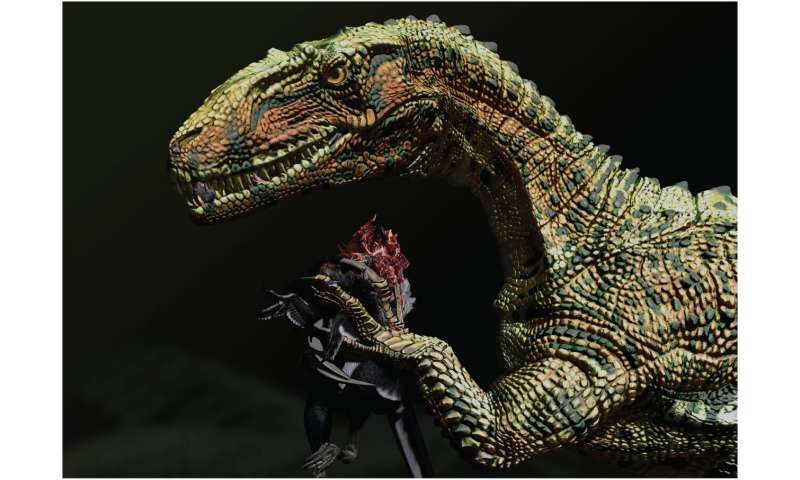Fossils of largest theropod to date found in Australia

A team of researchers from the University of New England, the Australian Age of Dinosaurs Natural History Museum and Swinburne University of Technology, all in Australia, has identified fossils found near Winton as remains of the largest theropod found to date in Australia. In their paper published in the journal Royal Society Open Science, the group describes the bones they found and its likely species.
In 2017, a farmer in the central-western Queensland town of Winton discovered several fragmented bones on his property. Suspecting they might be dinosaur fossils, he contacted the Australian Age of Dinosaurs Natural History Museum. A team was assembled, and a dig was established. The researchers found 15 more limb and vertebrae fossils.
The fossils closely resembled Australovenator wintonesis—a theropod species that was discovered in Australia in 2006. Theropods are a group of large, bipedal, carnivorous dinosaurs—included in the group are both Tyrannosaurus rex and Velociraptor. The newly found fossils are bigger than those of the specimen found in 2006, making it difficult to determine if the two specimens are the same species. The fossil size suggests the creature was approximately two meters tall and five to seven meters long. The researchers are not ruling out the possibility that the fossils belong to an undiscovered species. But the larger size indicates that the find represents the largest known carnivore to have lived in Australia.
The newly found fossils include two partial vertebrae, an unspecified number of hands and feet and multiple fragments that have yet to be identified. The hand bones are large and have recurved claws with a horny sheath, reminiscent of birds. Their size and shape suggest the dinosaur used them to grapple prey—strongly indicating that it was a predator. According to the researchers, the creature likely fed on quadrupedal herbivores, though there was the possibility it was also a scavenger.
The newly discovered dinosaur is just the third theropod found in Australia—the only other evidence of them in Australia is shed teeth found at sauropod dig sites. The researchers note that there is still debate regarding whether the theropods living in Australia had feathers.
More information: Matt A. White et al. New theropod remains and implications for megaraptorid diversity in the Winton Formation (lower Upper Cretaceous), Queensland, Australia, Royal Society Open Science (2020). DOI: 10.1098/rsos.191462
Journal information: Royal Society Open Science
No comments:
Post a Comment